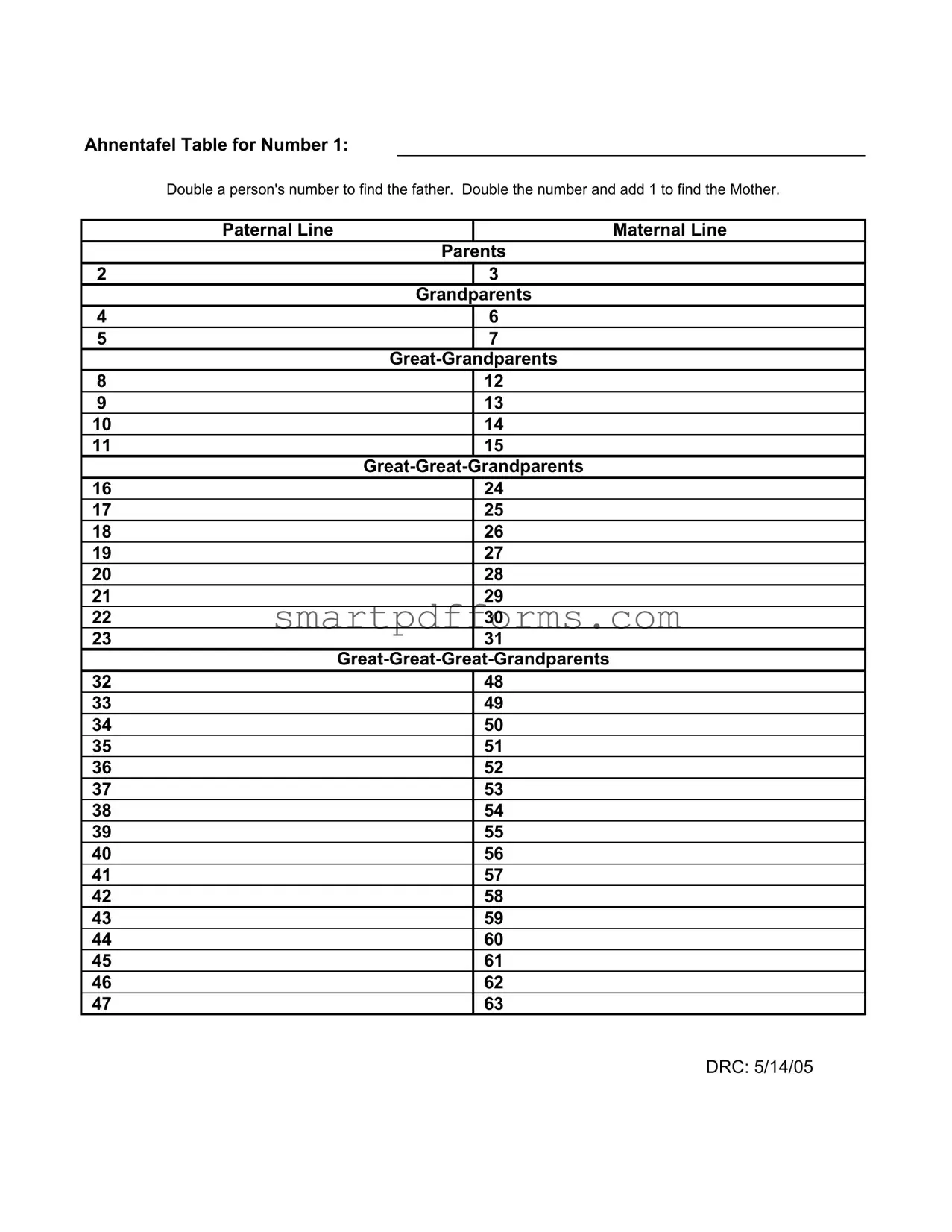Blank Ahnentafel PDF Template
The Ahnentafel form, a genealogical numbering system, simplifies the tracing of ancestry by assigning numbers to each person, with the starting individual as number 1. To find a person's father, double the individual's number; to find the mother, double the number and add one. This structured approach categorizes ancestors into paternal and maternal lines, spanning generations from parents to great-great-great-grandparents and beyond.
Ready to explore your roots? Click the button below to start filling out your Ahnentafel form.
Make This Document Now


